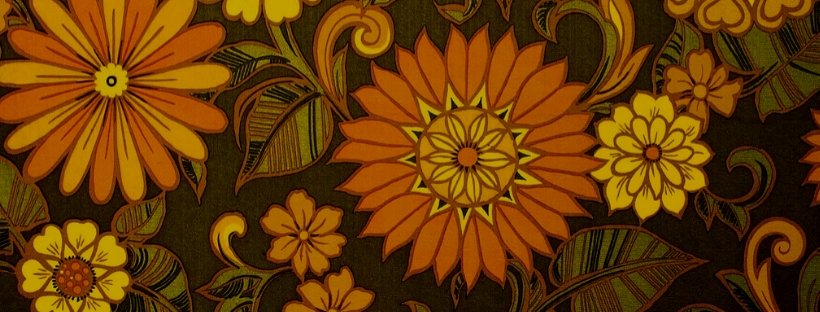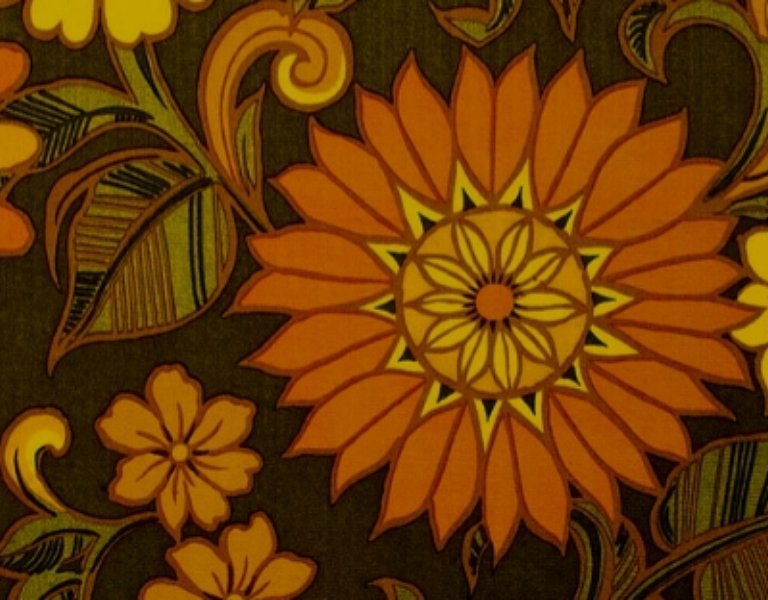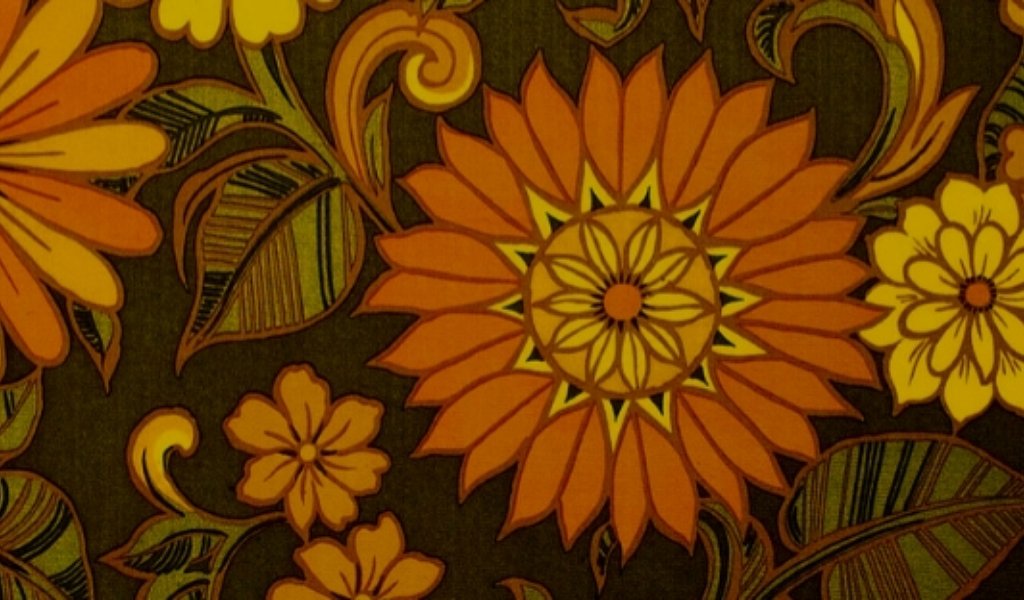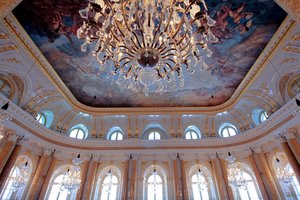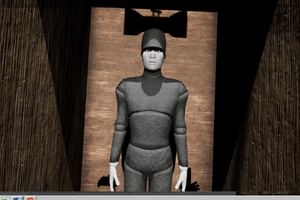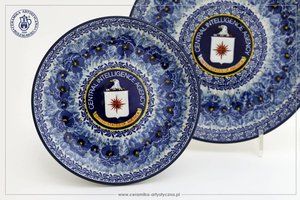Moda Polska - the 60th anniversary of the brand that “reinvented the Polish woman”
Moda Polska used to be more than just the clothing brand we know today. Navigating the complex reality of the “centrally planned economy”, thanks to its charismatic designers, it introduced female Poles to the world of sophisticated and practical fashion. The exhibition “Jerzy Antkowiak - Moda Polska” will open at The Central Museum of Textiles in Lodz on17 March 2019.
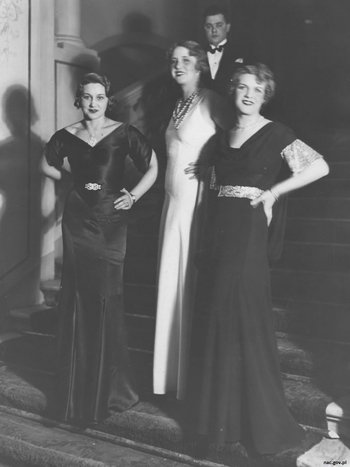 Lean years for Polish fashion
Lean years for Polish fashion
To understand the phenomenon of Moda Polska, a company established in 1958 that for many women continued to be a source of inspiration and a symbol of Polish fashion for the next forty years, we need to go back several decades. Pre-war Poland was a country with vibrant cultural and social life. While it was not home to any leading fashion houses or designers that would later be vaulted to international stardom, fashion was always important and relevant, and Warsaw was even dubbed the “Paris of Central and Eastern Europe.” The Second Polish Republic came to an abrupt end with the outbreak of World War II. Wartime hardship forced women to swap their smart outfits for more practical apparel, which was nevertheless often rather charming. This era saw the advent of reworked fashion - new clothes were made from old garments or from substitute materials. Blankets or curtains were used to make gowns, shoes were fashioned from rope, and blouses were sewn from maps.
The post-war years failed to bring on major improvements - years of reconstruction followed by the Stalinist era were not fertile ground for fashion. Officially, women had to break away from their “bourgeois habits” and adapt their looks to the aesthetics of Social Realism, i.e. dress plainly, modestly and practically to embody the ideal of the female worker. Obviously, unofficially, they wanted to look appealing and spruce up their bleak reality with their apparel, but conditions were not always permitting. Wardrobes consisted mainly of recycled clothes or, in the best case scenario, from contents of parcels coming from the West. In such conditions, the idea of the “revival of the Polish woman” was conceived in the mind of a certain pre‑war lady – Jadwiga Grabowska, the first manager of Moda Polska.
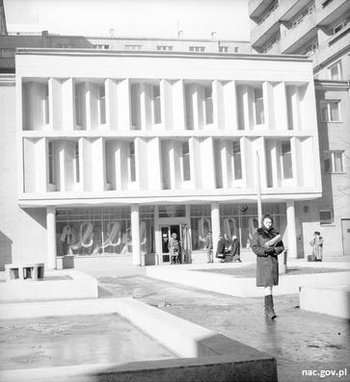 The beginnings of the Polish Coco Chanel
The beginnings of the Polish Coco Chanel
Jadwiga Grabowska was born in Warsaw in 1898 into the wealthy family of a designer of luxury tenement houses. She graduated from university before the war and worked as a translator for women’s magazines such as the famous Bluszcz but her career was the result of passion rather than necessity. Grabowska frequently travelled to Paris, where she completed a course in design and met Coco Chanel, to whom she was later often compared. This acquaintance had a massive impact on her taste and the fashion concepts she later pursued as a Polish designer. The war drastically changed the lives of Grabowska and her husband, and put Jadwiga in a whole new situation. As she herself recalled, after the war, for the first time in her life she was forced to work to earn a living and decided to design clothes. She perceived a need to revamp the image of the typical Polish woman, who throughout the occupation and the post-war era of reconstruction used clothes as functional garments.
Jadwiga Grabowska opened the first post-war fashion boutique - Dom Mody Feniks, which literally rose from the ruins of Warsaw. Regrettably, it was shut down in 1947 following efforts to combat private business, but Jadwiga refused to give up her passion. In the 1950s, she visited the most celebrated fashion fair behind the Iron Curtain in Leipzig. Soon after, she became Artistic Director of the Fashion Office for Cooperation with the Leipzig Fair, which was later transformed by the then Minister of Trade, Mieczysław Lesz, into Moda Polska.
“A joke should be funny, unlike an afternoon suit”
Obviously, Moda Polska was a state-owned enterprise, as a private fashion house could not exist in the then political and economic conditions. The famous swallow-shaped logo was designed by graphic designer Jerzy Treutler. The company designed two types of collections - haute couture and ready-to-wear. These first collections were revealed twice a year and featured designs inspired by foreign models transformed by the ideas of domestic designers. Ready-to-wear collections celebrated prêt-à-porter fashion. A chain of stores soon followed, but shops were opened exclusively in major cities. With hefty price tags, most female clients were forced to wait for sales. One could also find genuine gems - single items of clothing made for fashion shows or the most sought-after export rejects - garments that failed to meet the importer’s standards but were seen as items of premium quality in Polish conditions.
Moda Polska was meant to constitute a sort of a “safety valve” to provide Polish women with a sense that the Polish People’s Republic was open to international fashion. Jadwiga Grabowska often travelled to Paris to bring herself up to speed with French collections. She would fetch samples of fabrics and ideas for the trendiest cuts, and argued that her trips to France were essential to keep Moda Polska abreast of the latest trends. Allegedly, whenever ministry officials or the Polish Embassy in Paris would question the legitimacy of these expenditures, she would throw an ashtray at them. The company also pursued certain objectives aimed at creating fashion fit for the new era - elegant in style, but adapted to the needs of modern women. A practical example of this concept was so-called segment clothing, i.e. collections featuring versatile items – for example, an office suit that could be transformed into an evening outfit in just a few seconds. However, Moda Polska wasn’t always able to convince female Poles regarding comfortable solutions. The trouser suit, i.e. a women’s outfit consisting of trousers and a jacket, which was featured in Moda Polska’s collections didn’t gain popularity for a long time – in the early 1970s female trousers in Poland were perceived as sportswear rather than smart clothing.
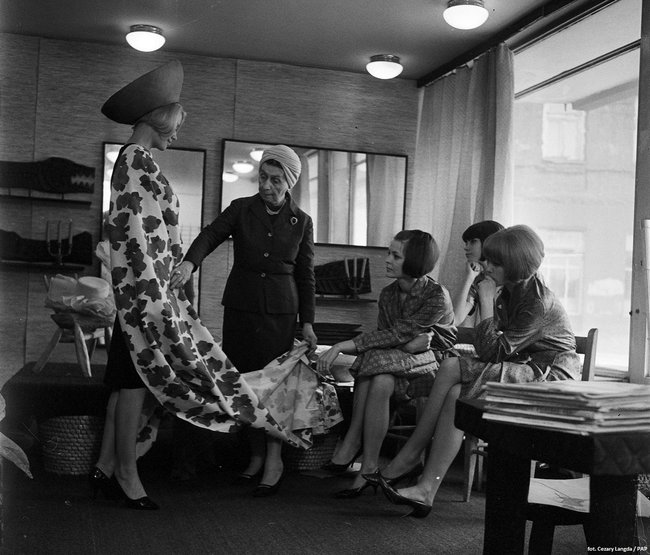 The phenomenon that was Moda Polska was largely driven by the unique personality of Jadwiga Grabowska. Despite the fact that she was sixty when the company was founded, she was bursting with energy, ideas and had an impeccable sense of style. Her inimitable look featured a classic suit and a turban, which became her signature. What’s more, she was extremely open to current trends. Despite being raised in a very different sartorial era, she never rejected the latest fashion. For example, she admired Mary Quant, the British designer who created the famous mini skirt and started the era of rivalry between London and Paris as they fought for the title of the European capital of fashion. Grabowska’s words about plastic jewellery seem to be very telling: “It elevates [haute couture] plastic to an equal status; they like plastic jewellery, they instinctively reject tackiness, because fashion jewellery is tacky, as it pretends to be something it is not. It’s very typical. It’s against falsehood.” She required models not only to look good, but also to demonstrate impeccable manners and elegance. The women who modelled for Moda Polska included Małgorzata Wróblewska-Blikle, Małgorzata Krzeszowska, Teresa Tuszyńska, Ewa Fichner, Elżbieta Grabacz and Beata Opoczyńska. Allegedly, Grabowska treated them like her own daughters, although she was rather distant and kept herself to herself. Her statements reveal that she was a person who above all valued good manners and courtesy, though that doesn’t mean that she was docile. Quite the opposite, she always had the last word, especially when it came to fashion. She once joked that she was only afraid of God and her own husband.
The phenomenon that was Moda Polska was largely driven by the unique personality of Jadwiga Grabowska. Despite the fact that she was sixty when the company was founded, she was bursting with energy, ideas and had an impeccable sense of style. Her inimitable look featured a classic suit and a turban, which became her signature. What’s more, she was extremely open to current trends. Despite being raised in a very different sartorial era, she never rejected the latest fashion. For example, she admired Mary Quant, the British designer who created the famous mini skirt and started the era of rivalry between London and Paris as they fought for the title of the European capital of fashion. Grabowska’s words about plastic jewellery seem to be very telling: “It elevates [haute couture] plastic to an equal status; they like plastic jewellery, they instinctively reject tackiness, because fashion jewellery is tacky, as it pretends to be something it is not. It’s very typical. It’s against falsehood.” She required models not only to look good, but also to demonstrate impeccable manners and elegance. The women who modelled for Moda Polska included Małgorzata Wróblewska-Blikle, Małgorzata Krzeszowska, Teresa Tuszyńska, Ewa Fichner, Elżbieta Grabacz and Beata Opoczyńska. Allegedly, Grabowska treated them like her own daughters, although she was rather distant and kept herself to herself. Her statements reveal that she was a person who above all valued good manners and courtesy, though that doesn’t mean that she was docile. Quite the opposite, she always had the last word, especially when it came to fashion. She once joked that she was only afraid of God and her own husband.
And what can you do, son?
The title of the exhibition in Lodz includes the surname of Jerzy Antkowiak, another big name in the history of Moda Polska. He first learnt of the company during a fashion show staged at a design exhibition in the Palace of Culture and Science. Fascinated by Moda Polska’s collection, he went straight to Grabowska and announced that he wanted to work for her. This is when she said the famous sentence that became an anecdote many years later: “And what can you do, son?”
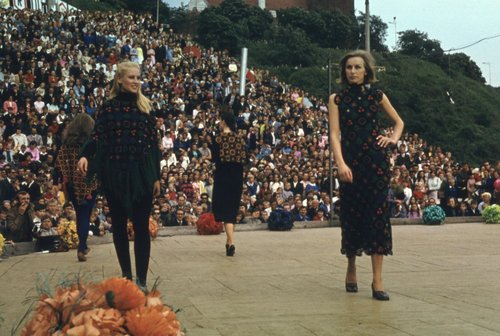 Actually, Antkowiak couldn’t do much at the time - he lacked experience as a designer, and the portfolio he wanted to present to the Polish haute couturier was not created over the course of many years, but built from scratch over a short period of time. But as it turned out, it was he who later became the second most celebrated Moda Polska designer after Grabowska. In 1979, when Jadwiga retired and Halina Kłobukowska became the new director, it was Jerzy Antkowiak who set the tone for the company. He took his cues mainly from the designs of Yves Saint Laurent, whom he considered to be the leading couturier. Unfortunately, Antkowiak took the helm during an extremely challenging period. Following Władysław Gomułka’s “little stabilisation” and the “economic miracle” of the 1970s, martial law brought on a never-ending economic downturn and a shortage of everything. It’s not surprising that scarcities took their toll on Moda Polska. In 1982, Jerzy Antkowiak presented a collection made from... tent canvas.
Actually, Antkowiak couldn’t do much at the time - he lacked experience as a designer, and the portfolio he wanted to present to the Polish haute couturier was not created over the course of many years, but built from scratch over a short period of time. But as it turned out, it was he who later became the second most celebrated Moda Polska designer after Grabowska. In 1979, when Jadwiga retired and Halina Kłobukowska became the new director, it was Jerzy Antkowiak who set the tone for the company. He took his cues mainly from the designs of Yves Saint Laurent, whom he considered to be the leading couturier. Unfortunately, Antkowiak took the helm during an extremely challenging period. Following Władysław Gomułka’s “little stabilisation” and the “economic miracle” of the 1970s, martial law brought on a never-ending economic downturn and a shortage of everything. It’s not surprising that scarcities took their toll on Moda Polska. In 1982, Jerzy Antkowiak presented a collection made from... tent canvas.
Moda Polska survived until 1998. Though the company went bankrupt, its memory and rich legacy live on. The exhibition at The Central Museum of Textiles in Lodz presents designs purchased by Jerzy Antkowiak at the auction of the company, which were later stored in his cellar for the next two decades. Today, they remind us that despite numerous obstacles and a hostile environment, Moda Polska strived to promote an all-Polish sartorial style. The brand was accused of promoting fashion from Parisian catwalks, detached from the socialist reality and unattainable for most Polish women because of a limited sales network and hefty prices. Moda Polska operated in times when it took approximately two years for the centrally managed industry to launch a garment created by a designer, and the low quality of fabrics and dyes used in mass production of clothing made most available items look identical and bleak. But this is exactly why Moda Polska was so essential – as a window on the world, an inspiration and proof that Polish fashion could be trendy, attractive and of high quality.
The exhibition “Jerzy Antkowiak - Moda Polska” will be open daily (except for Mondays) at The Central Museum of Textiles at ul. Piotrkowska 282 (building D, 2nd and 3rd floor), Lodz, from 17 March 2019. Adult tickets - PLN 10. Discounted tickets - PLN 6.
14.11.2018
